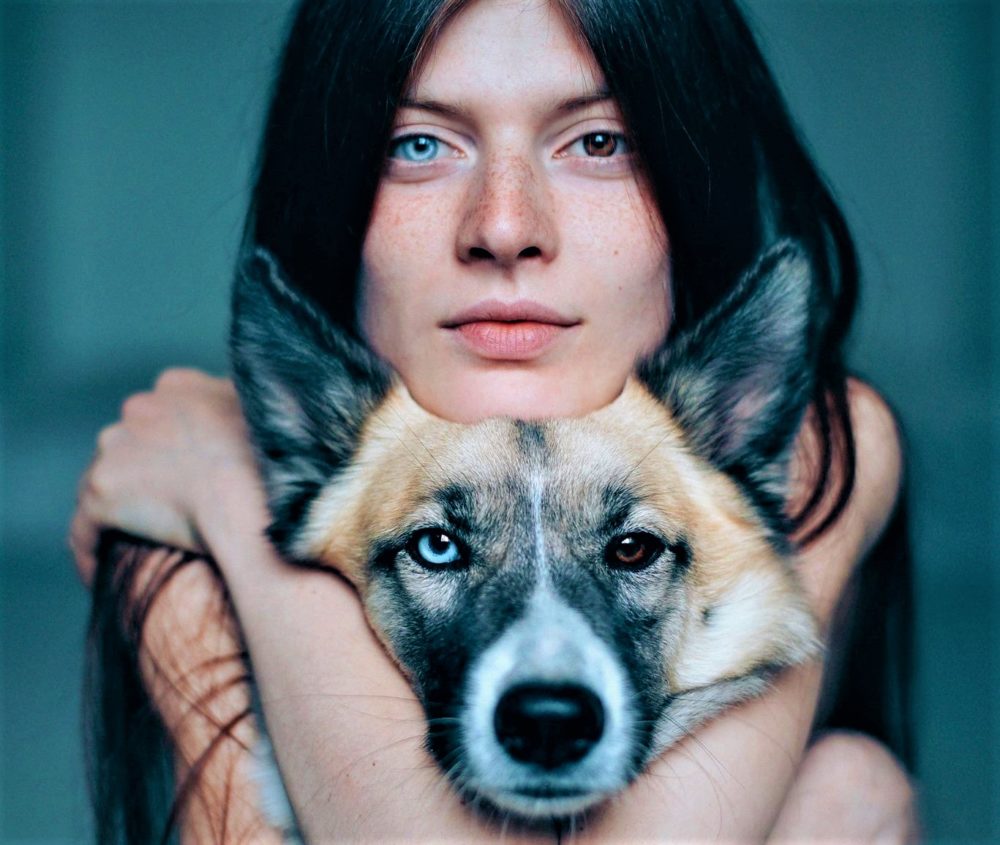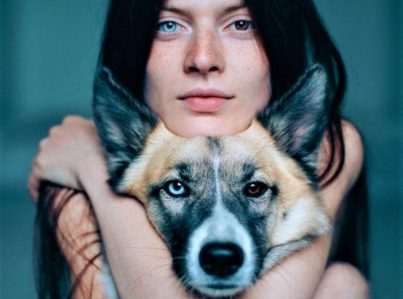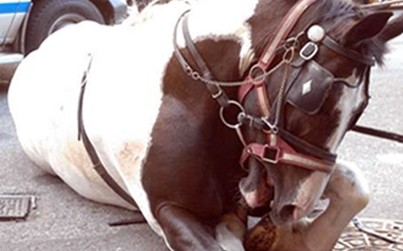Back in May 2016, a rambunctious three-year-old boy fell into a lowland gorilla enclosure at the Cincinnati Zoo and Botanical Garden. What unfolded, for the most part, was caught on amateur cellphone video. Harambe, a seventeen-year-old 440-pound gorilla proceeded to fetch the small child from the water feature in his cell and seemed to enjoy poking, prodding, and tossing the little boy around, obviously terrifying his parents and everyone watching.
Apparently, the spirited boy climbed a three-foot-tall fence, crawled through four feet of bushes, and then fell fifteen feet into a moat of shallow water close to where Harambe was sitting. Some people criticized the parents of the little boy, but I can tell you that our son Cooper would have done the same thing. There are just some kids who cannot be contained.
Of course, the zoo responded with bloodshed. The authorities felt they had no choice but to kill Harambe with a single gunshot—sniper- style from above the enclosure. This seventeen-year-old gorilla who never knew freedom, whose already stressful space was disrupted by a surprise visit from a small child, was killed in broad daylight. Killing Harambe seemed to be the only logical choice to make in order to save the boy’s life.

But was it really?
Video evidence shows the boy wasn’t actually (intentionally) being hurt by the gorilla. In fact, Harambe seemed to be helping by pulling him out of the water. What would have happened if they had left the gorilla alone with the boy longer? Would he have lost interest and let the boy go? Would the gorilla have ended up cuddling or nurturing his newfound friend? What if the zoo had coaxed Harambe away from the boy with his usual feeding routine? Or, what if the gorilla himself willingly handled the boy over?
So many unanswered questions. We’ll never know, because the authorities felt they couldn’t take any of these unknown risks, prefer- ring to kill him.
Conclusion: a human boy’s life was considered more valuable than that of a gorilla’s. This leads us to question: why was the boy’s life considered more valuable than the gorilla’s? Are human lives more important than other animals’?
Had literally any other species of animal fallen into that enclosure instead, the zoo most likely would have stayed back and let nature take its course. This idea that the boy’s life was more valuable than the gorilla’s brings to the forefront, once again, this idea of speciesism, which we examined in chapter three. One species is considered more important than another. Pigs, who are more intelligent than dogs, are bred and butchered for meat while the family dog looks on and feeds from the table scraps.
Another description of speciesism:
speciesism [ˈspēSHēˌzizəm, spēsē-/]
[noun] the assumption of human superiority leading to the exploitation of animals
At what point, if ever, will we look the other way in regard to speciesism? Will veganism become so accepted that the majority population will eventually make the connection and realize this is a planet shared by all?
If we believe a human’s life is more important than a gorilla’s, then is a life as important as a gorilla’s?

In Ithaca where we live, we are surrounded by colleges and universities, lakes and wineries, and bucolic rolling hills. However, we have very little to do with the little ones on weekends, which is why we go to the Sciencenter. I bring our two budding scientists to the hands-on science museum pretty much once a week. They have science displays, an outdoor playground, and cool experiments and activities to keep our toddlers occupied for hours on end.
And they also have frogs.
And snakes and fish and horseshoe crabs and a variety of other small amphibians and marine life, all held captive in cages, glass tanks, and terrariums in one small room within the 18,000-square foot museum.
When Harambe was killed, I voiced my opinion, which is actually an undisputed fact, that gorillas don’t belong in Cincinnati in the first place. Penguins don’t belong in Pittsburgh. And giraffes don’t belong in Jacksonville. They just don’t.
I mention this fact, and a friend, who likes to poke at our vegan lifestyle, took time to comment and start a “discussion.”
“So, you’re saying zoos are bad?” he asked, knowing full well what my answer was going to be. Non-vegans do this all the time.
“Yes. There really is no such thing as a ‘good zoo’ or a ‘good aquarium.’ Animals don’t deserve to be imprisoned for human entertainment.”
“You think Harambe would have been better off in the wild?”
“Of course. It’s where he belongs.”
“And you won’t take your kids to zoos or aquariums as part of your ‘vegan agenda’?”
“No. They can learn all they need to learn from books, films, and the internet. As it is, Cooper knows more about dinosaurs than any other animal, and, not surprisingly, he’s never actually seen one before. We won’t support them.”
“But, you take your kids to the Sciencenter.”
Long silence. Caught. Off guard.
Of course, the answer was “yes” and “often,” and I knew where his line of questioning was heading. If we were “true vegans,” we wouldn’t support even a small hands-on science museum in our small town because they feature smaller, mostly local, animals in their glass-lined prisons. I had no response. I had to dig deeper to truly wrap my mind around his point. Sure, I can use the opportunity to educate my kids on the fact that these animals belong in the wild and that, to us, the life of a frog is as important as the life of a gorilla, a snake, a lizard, and a fish. No matter the size or species of an animal, they should be allowed their freedom.
Yet, there I am. Supporting their imprisonment. To this day, I still think about it every time we go back to the Sciencenter. And I guess that’s the point.
What is the value of an unborn chick versus an adult chicken, especially in classrooms where the practice of hatching is meant to educate?
Cindy Ford, a vegan parent of two, is a home cook who enjoys writing about all things vegan. She lives in Columbus just an hour and a half from where Harambe spent his last days of his imprisoned life, and she’s also the HappyCow vegan ambassador for the city. Active in her daughters’ lives, she became a Parent Teacher Organization (PTO) activist when her girls came home with the flyer saying they would be hatching eggs in their classroom.
Okay, vegans, what’s wrong with hatching eggs in the classroom?
“I think this is an important question,” says Cindy. “Raising chicks in the classroom may seem like an innocuous educational lesson, but it’s important to ask questions to uncover the real issues involved. The answers will shed light to the very nature of the problems, and there are many. When I dealt with this issue, the first question I asked my daughter’s teacher was, ‘Where were these chicks obtained?’
The follow-up question was (and I asked this of all the teachers in my daughter’s grade), ‘What will happen to the chicks after the project?’ While these seem like simple questions, they were never asked before. They had never been thought of much by the parents before me. The only concern by (non-vegan) friends was whether or not they would be one of the ‘lucky’ families to bring home the chicks post-lesson (my suburban town outside of Columbus allows backyard hens).”
Cindy educated the educators and shed light on the downside of hatching in the classroom, while also outing herself as a “crazy vegan.”
“I truly think that becoming vegan has changed me in every sense,” she says. “It has made me more thoughtful and aware of the animals that are around us. I continually wonder what is happening to them in relationship to humans. Is it positive or negative?
Unfortunately, I’ve realized that very few animals have benefited from human contact.
“At our elementary school, the fertilized chicken eggs were mailed via the post office to the school from a hatchery. I had no idea that this was common practice. After hatching, our school allowed the chicks to go home with parental permission. While hens are allowed in my city, roosters are not. In my community, hens are permitted so that my neighbors can exploit them for their eggs.
“Unfortunately, all unwanted chicks are sent to the local university’s extension program (Ohio State University). OSU has been responsible for giving the unwanted animals to local farmers. I was informed by the extension liaison that the animals would likely be used for laying purposes and possibly meat. As she explained, they are ‘meat animals.’”
Meat animals. From an in-classroom science experiment to the dinner table. These adorable chirping chicks grow up before the kids’ eyes, only to later become a McNugget. Could you imagine, right after these chicks were hatched, if the teacher asked, “Who wants to eat one first?”
That’s what’s going on here.
“Despite the certain fate of these animals, I think an (un)expected issue with raising chicks in the classroom is the emotional attachment that the children develop by raising and caring for them,” Cindy continues. “This was definitely an issue that our family dealt with. My daughter quickly became attached to one chick in particular. She named him Brownie, and he was adopted by a family who had the intention of eating the bird. My family was really concerned and wanted nothing more than to save my daughter’s favorite chick. In the end, I was able to rescue him and four other chicks from the project by finding them refuge at the local animal sanctuary. Guess what? The other children in the class also wanted the chicks to live (even though most were eating chicken regularly).”
The 2012 documentary Peaceable Kingdom uncovers more about the connections kids make to animals and how their upbringing and education leads them down certain paths. The film explores the awak- ening conscience of several people who grew up in traditional farming culture and who have now come to question the basic assumptions of their way of life. One person featured is Harold Brown, who happens to work at my local co-op in Ithaca and who has become an outspoken animal rights activist.
Harold was raised on a dairy farm in south central Michigan and spent much of his childhood raising cows as part of his 4-H youth program. Through Harold’s own accounts, and emotional footage of other young people in the same program, it becomes evident fairly quickly in the film that the kids form strong, emotional bonds with the animals they are raising as they compete for “Best in Show,” only to find out that the cows are later sold for auction and either live out the rest of their lives in a constant state of pregnancy/lactation or are slaughtered for meat.
The World Dairy Expo, held in Madison, Wisconsin, is the world’s largest dairy expo. This is where cows go to have their udders lotioned up so they can be judged in the arena not unlike a beauty pageant; except, of course, that there is nothing beautiful about the event. These animals lead a life of servitude, are forced to give up their offspring, and travel for sometimes hundreds of miles in a hot trailer, only to be judged on how laden they can become with milk—sometimes so much so that they can’t walk normally. These innocent cows were born and bred to be impregnated, milked, shown off, auctioned off, and murdered.
Imagine raising a show dog who wins a blue ribbon at Westminster, only to be forced to auction off your dog—and later you discover she was killed for meat. (For the record, adopt/don’t shop; please find your companion animal at a rescue.)
A dog is a cow is a cat is a pig is a human.
“Animals are not products. Life doesn’t have a price.” Anonymous
Harambe: A Gorilla Dies in Cincinnati is an excerpt from the just released must-read The Smart Parent’s Guide to Raising Vegan Kids by Eric C Lindstrom, who is also the author of The Skeptical Vegan. He lives in Ithaca, NY with his vegan wife, two vegan toddlers, and vegan dog named Kimchi. Follow Eric on all social media through TheSkepticalVegan.com.



